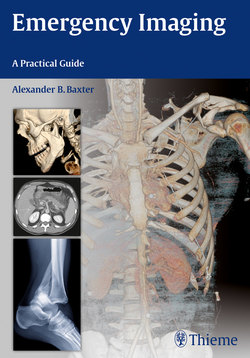Читать книгу Emergency Imaging - Alexander B. Baxter - Страница 57
На сайте Литреса книга снята с продажи.
Оглавление43
2Brain
mote head injury include prior craniotomy, facial fractures, and burr holes.
Remote cerebral infarcts may have a sim-ilar appearance but can be distinguished by their distribution, which should corre-spond to arterial territories. Longstanding demyelinating disease and primary brain degenerative disorders are often associated with volume loss and focal low-attenuation change, but lesions in these conditions are usually seen in the white matter and deep nuclei (Fig. 2.16).
◆ Posttraumatic Atrophy and Encephalomalacia
Survivors of significant head trauma suer a variety of neurologic symptoms includingcognitive impairment, headache, epilepsy,and persistent focal motor or sensory deficits.
Nonenhanced head CT shows general-ized volume loss, which can develop in as little as 4–6 weeks. Focal encephalomala-cia involving the inferior frontal lobe, the anterior and inferior temporal lobe, the posterior cerebellum, and the parasagittal convexity are common sequelae of cortical contusions. Other findings supporting re-
Fig. 2.16a–f a–c Posttraumatic atrophy following head injury in a 24-year-old. (a) Initial CT and (b) FLAIR MRI show mild swelling, cortical contusions, and shear hemorrhages but near-normal ventricular size and volume for a young adult. (c) CT performed one month after injury shows interval global ventricular and sulcal enlargement as well as focal right-sided encephalomalacia.
d–f Posttraumatic encephalomalacia. Left inferior frontal and bilateral anterior temporal lobe low-atten-uation focal parenchymal changes with mild generalized volume loss, indicated by subtle lateral ventricle temporal tip and fourth ventricle enlargement. This distribution is typical of remote traumatic cortical contusions. (f) Healed left zygomatic arch fracture further supports a remote injury.
